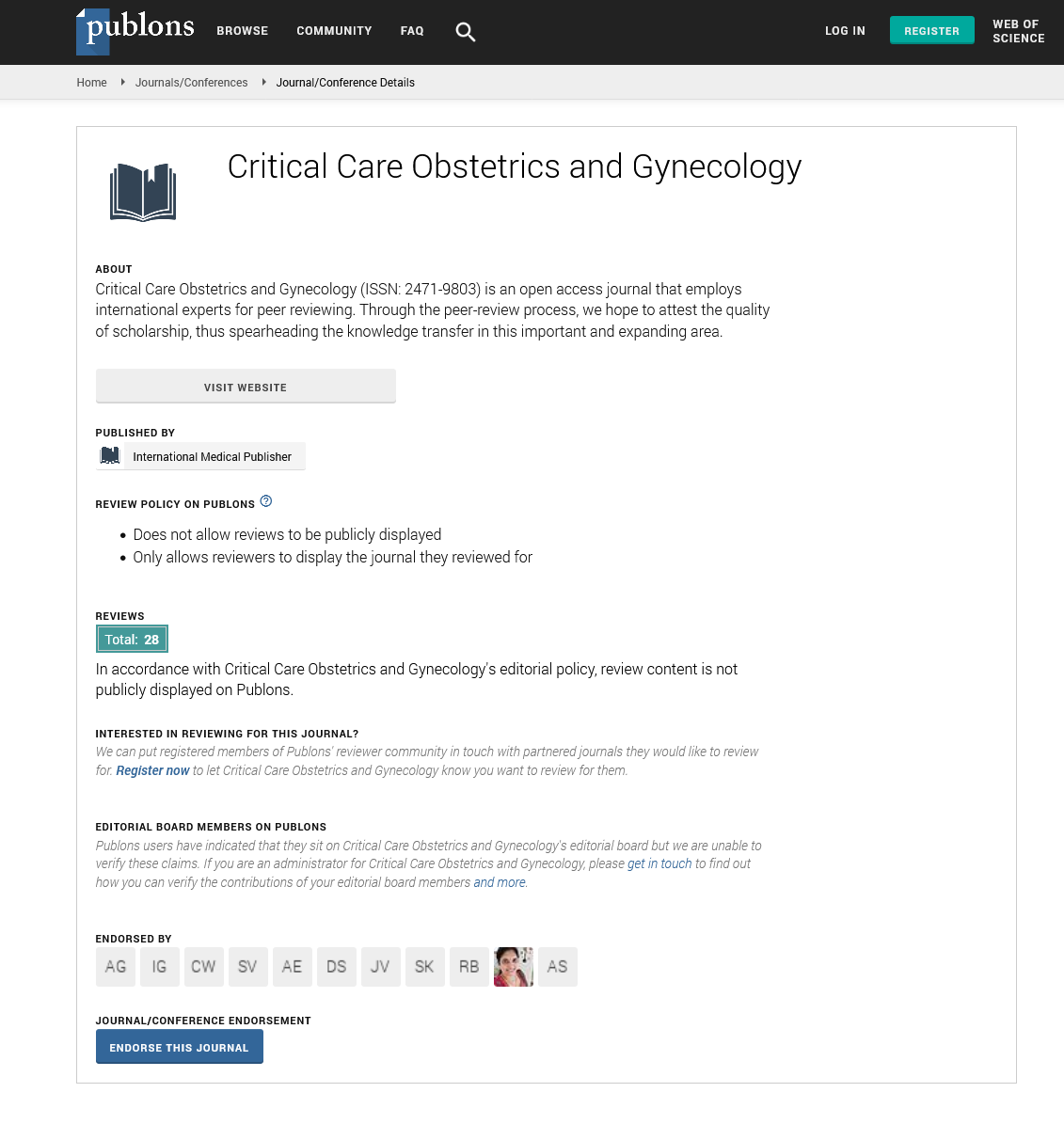Abstract
Role of Pelvic Artery Embolisation in Postpartum Hemorrhage
Purpose: To evaluate the safety and efficacy of Pelvic Arterial Embolization (PAE) for the treatment of Primary and secondary Postpartum Hemorrhage (PPH) and to determine the factors associated with clinical outcomes.
Materials and methods: This was a retrospective single-center cohort study in which data was retrieved from electronic medical records. Outcomes were analyzed in 22 patients who underwent PAE for PPH between January 2008-May 2019 over a period of 11 years. Mode of delivery, causes of bleeding, laboratory and treatment records, and clinical outcomes were retrieved. Clinical success was calculated. Univariate analysis was performed to determine the factors related with clinical outcomes.
Results: The mean age of pregnant women included in our study is 28.3 ± 4 years. Most of them had primary PPH-20(90.9 %) patients. 13 (59.1%) patients had coagulopathy. In most of them embolic material used were gel foam and its combination-18 (81.7%). In majority of them uterine artery alone was embolised-12 (54.5%). Only 4.5 % had complications after PAE. The clinical success rate was 17/22 patients (77.3%). Overall mortality was 2 of 22(9%). Univariate analysis showed that Disseminated Intravascular Coagulation (DIC) and massive transfusion of more than 15 red blood cell units were related to failed PAE cases.
Conclusion: PAE is safe and effective for managing primary & secondary PPH. Patients with DIC and massive transfusion were likely to have poor results after pelvic artery embolisation.
Author(s):
N Navakumar, MK Yadav, R Vidyalekshmy and NA Paul
Abstract | Full-Text | PDF
Share this

Google scholar citation report
Citations : 148
Critical Care Obstetrics and Gynecology received 148 citations as per google scholar report
Critical Care Obstetrics and Gynecology peer review process verified at publons
Abstracted/Indexed in
- Google Scholar
- China National Knowledge Infrastructure (CNKI)
- WorldCat
- Publons
- Geneva Foundation for Medical Education and Research
- Secret Search Engine Labs
Open Access Journals
- Aquaculture & Veterinary Science
- Chemistry & Chemical Sciences
- Clinical Sciences
- Engineering
- General Science
- Genetics & Molecular Biology
- Health Care & Nursing
- Immunology & Microbiology
- Materials Science
- Mathematics & Physics
- Medical Sciences
- Neurology & Psychiatry
- Oncology & Cancer Science
- Pharmaceutical Sciences


